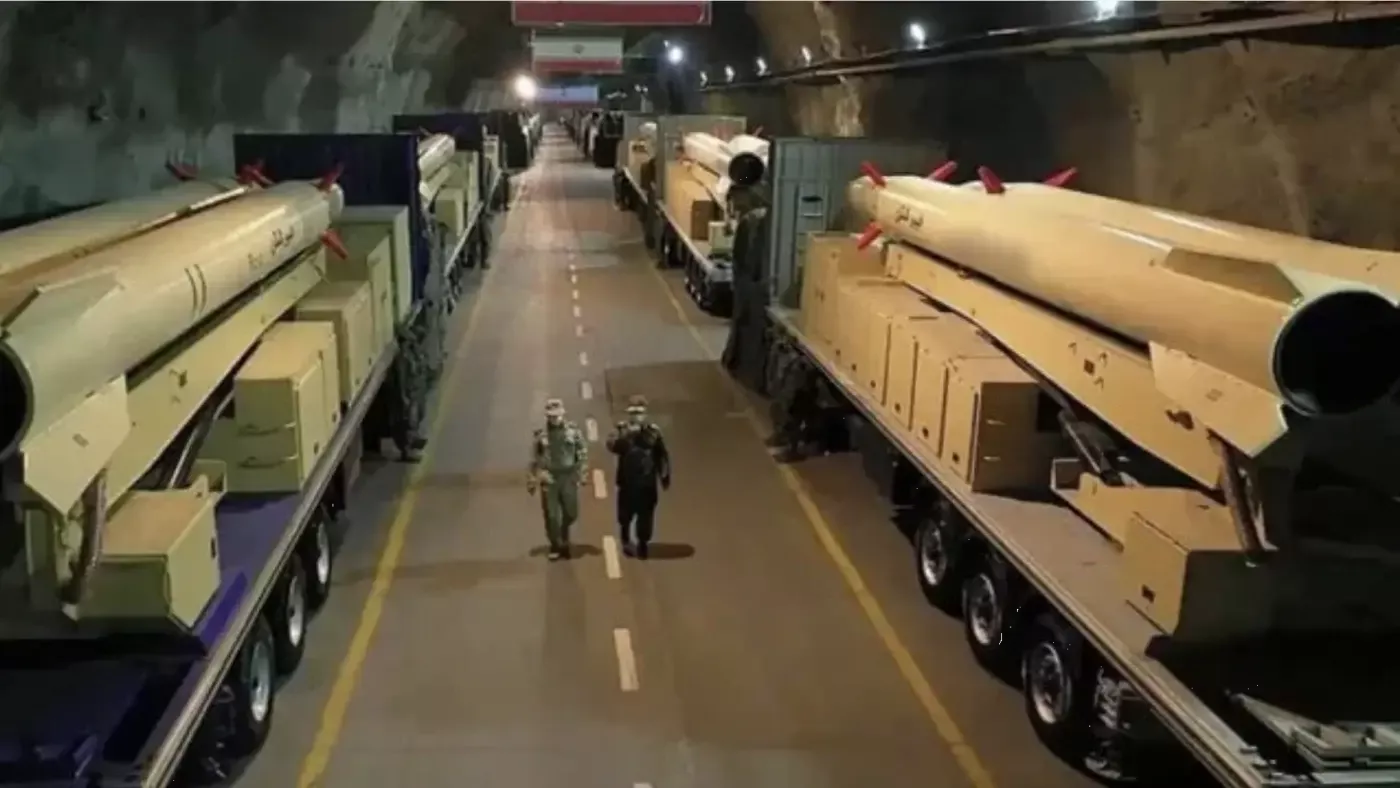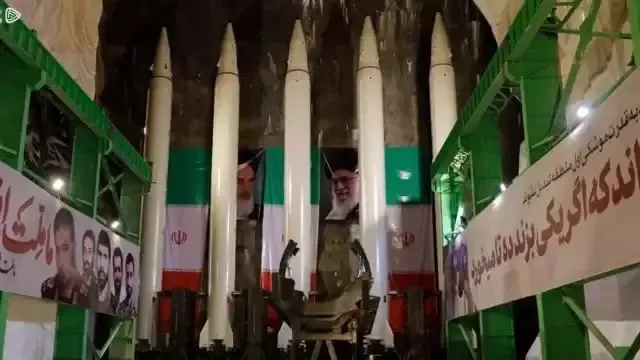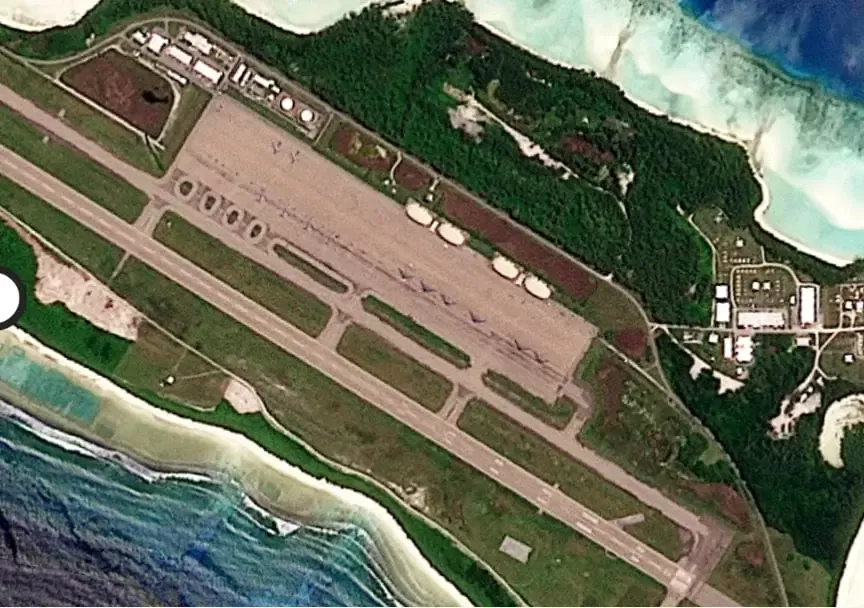
Photo: Tasnim
According to U.S. officials speaking on condition of anonymity to Reuters, in the past week, the U.S. has deployed six additional military aircraft equipped with "stealth" technology capable of carrying America's heaviest bombs to a military base in the region accessible to Iran and Yemen.
In response, Iran stated that America's significant military presence in the region implies that they must "not throw stones" and "maintain a glass wall."
Iran also threatened to bomb the military base located on Diego Garcia Island in the Chagos Archipelago – a British territory in the Indian Ocean, which is currently in the process of being handed over to Mauritius. Previously, Iran had not indicated that it had such capabilities.
What do the so-called "rocket cities" mean, why did Iran decide to talk about them now, and what does this signify for a potential conflict in the Middle East?
What are Iran's "rocket cities"?

It is assumed that this is a site for preparing missiles in one of the corps' underground "rocket cities"
“Rocket cities” is a term used to describe large underground missile bases operated by the Islamic Revolutionary Guard Corps. These bases are spread throughout the country and consist of an interconnected network of deep tunnels, most of which are located in strategically important mountainous areas.
They are used to store, prepare, and launch ballistic and cruise missiles, as well as other strategic weapons – drones and air defense systems.
According to the corps commanders, these rocket cities are not merely weapons depots. Some of them also serve as factories for "producing and preparing missiles before being put on combat duty."
The exact locations of these missile bases are unknown and have never been officially disclosed.
The commander of the aerospace forces of the Islamic Revolutionary Guard Corps, Brigadier General Amir Ali Hojizoda, presented the latest "rocket city" in an interview with the IRIB state television and radio company. The video showed ballistic missiles and kamikaze drones located deep underground. It is impossible to independently verify what exactly is depicted in this video.
This is indicated as a sign of why it is happening right now, as state publications announced that Tehran would use this weapon in response to "any hostile actions against Iran."
"If an attack is launched against Iran from any base in the region or within the radius affected by Iranian missiles, it will not distinguish between British or American targets," Tehran emphasized.
Over the past 10 years, the corps has periodically released images of numerous missiles, drones, and defense systems stored in underground tunnels, referring to them as "secret rocket cities."
How significant is this for the U.S. and Israel?
By showcasing its capabilities, Iran aims to deter Israel and the U.S. from escalating tensions further.
New footage shows cruise missiles such as "Haybar Shekan," "Hoj Qasim," "Emad," "Sejil," "Kadar-N," and "Paveh."
Iran claims it can hit targets up to 2000 kilometers away.
The "Emad" ballistic missiles were used in Iran's attack on Israel in April 2024, resulting in damage to the "Navatim" airbase in central Israel.
The shortest distance from Iran to Israel, passing through Iraq, Syria, and Jordan, is about a thousand kilometers. Israel reported that 99% of the missiles were intercepted during the April 2024 attack. The second attack in October caused no significant damage.
However, there are doubts about the range and power of Iranian missiles. Therefore, the recent statements regarding their capability to reach the U.S. military base on Diego Garcia can be considered a significant event.

Range of Iranian ballistic missiles
Since the early 1970s, there has been a joint British and U.S. military base on Diego Garcia Island. It is well-protected and located about 3800 kilometers from Iranian territory.
This week, Iran reiterated its statement that its "Shaheed-136B" drones have a range of up to 4000 kilometers, but there is still no evidence for this.
Currently, despite Iran not having missiles with a range exceeding 2000 kilometers, theoretically, it could strike the island using naval fleet assets or modify its existing missile systems.

The U.S. has already deployed significant forces in the Middle East, and soon two aircraft carriers will appear in the region.
The following satellite images show that there are B-2 bombers at Diego Garcia; they recently participated in U.S. operations against Houthi rebels in Yemen.

Satellite images from April 1 show six B-2s at the base, which were not present in images from a week earlier
"If Iran or its supporters threaten U.S. forces and American interests in the region, the United States will take decisive action to protect our people," said Pentagon spokesman Shawn Parnell this week.
The U.S. Strategic Command declined to comment on how many B-2 bombers are at the Diego Garcia base and emphasized that it would not comment on exercises or operations involving them.
The U.S. Air Force has a total of 20 B-2 bombers, which means they are not used extensively.
Why did Iran choose to talk about "rocket cities" now?
The new statements from Iranian officials come at a time of heightened tensions between Iran, the U.S., and Israel over three issues: the threat from Houthi rebels supported by Iran, negotiations regarding Iran's nuclear program, and Israel's new attacks aimed at weakening the Iran-backed "Hezbollah" group in Lebanon.
On Sunday, U.S. President Donald Trump threatened to bomb Iran if Tehran does not reach an agreement with Washington on its nuclear program and to impose additional tariffs.
Additionally, last year, tensions between Iran and Israel escalated – both sides struck each other, and the demonstration of a new missile facility appears to be aimed at emphasizing that Iran could deliver a powerful missile strike if attacked.
Iran continues to promise a third strike against Israel. However, Tehran is under constant pressure from the international community, and there are doubts about whether Tehran can deliver on its promises, especially considering that Israeli strikes have weakened Iran's missile capabilities.
Moreover, Iranian officials are trying to show their citizens that they can withstand any threats from the U.S.
The purpose of building underground "rocket cities" is to enhance resilience against air attacks and to have a deterrent factor.
By constructing such "cities," Iran demonstrated that it could deliver retaliatory strikes even if its land bases were attacked by the U.S. and Israel.
Underground bases allow for missile launches from unknown points to the enemy and hinder accurate assessments of Tehran's military capabilities.